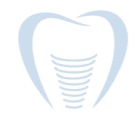
Millions of Americans struggle with sleep apnea, a serious condition that disrupts breathing patterns during sleep and affects overall health and quality of life. While continuous positive airway pressure (CPAP) therapy remains the gold standard for many patients, it doesn’t work for everyone. When conservative treatments fail to provide adequate relief, or when anatomical factors create persistent airway obstructions, surgical intervention may offer the lasting solution you need.
Understanding when sleep apnea requires surgical treatment can help you make informed decisions about your care and potentially transform your sleep quality and overall health. For patients in the South Bay area dealing with treatment-resistant sleep apnea, surgical options provide hope for achieving the restorative sleep that has been elusive for too long.
Recognizing When Conservative Sleep Apnea Treatments Fall Short
Most sleep apnea patients begin their treatment journey with conservative approaches, and many find success with CPAP therapy, oral appliances, or lifestyle modifications. However, these treatments don’t work for everyone, and some patients experience persistent symptoms despite their best efforts to follow prescribed therapies.
Signs that conservative treatments may not be sufficient include:
- CPAP Intolerance: Difficulty tolerating the mask, experiencing claustrophobia, or developing skin irritation that prevents consistent use
- Persistent Symptoms: Continued daytime fatigue, morning headaches, or cognitive difficulties despite regular CPAP use
- Inadequate Pressure Control: Needing extremely high CPAP pressures that cause discomfort or air leaks
- Lifestyle Limitations: Travel difficulties, relationship strain, or occupational challenges related to CPAP equipment
- Progressive Worsening: Sleep apnea severity that continues to increase despite treatment compliance
When these situations arise, it may be time to consider surgical options that can address the underlying anatomical causes of your sleep apnea rather than simply managing symptoms with external devices.
Understanding the Anatomical Causes Behind Surgical Sleep Apnea
Sleep apnea surgery targets specific anatomical factors that contribute to airway obstruction during sleep. Unlike CPAP therapy, which forces air through a narrowed airway, surgical procedures aim to permanently enlarge or stabilize the airway to prevent collapse.
The most common anatomical issues that may require surgical correction involve excess soft tissue in the throat, structural abnormalities in the jaw or facial bones, or a combination of both factors. Dr. Benjamin Yagoubian, DDS, MD, at Torrance Oral Surgery Center brings extensive training from Columbia University in both dental and medical disciplines, providing the comprehensive expertise needed to evaluate and address these complex anatomical factors.
His dual degree background, with both DDS and MD credentials, ensures a thorough understanding of how facial skeletal structure, soft tissue anatomy, and breathing mechanics work together. This comprehensive knowledge proves crucial when determining which surgical approach will be most effective for your specific anatomical situation.
Primary anatomical factors addressed through surgery include:
- Excess Pharyngeal Tissue: Enlarged tonsils, uvula, or soft palate that blocks the airway during sleep
- Tongue Base Obstruction: Posterior tongue positioning that narrows the airway space
- Jaw Positioning Problems: Retruded or small jaw structure that reduces airway volume
- Nasal Obstruction: Structural abnormalities that force mouth breathing and worsen sleep apnea
- Combined Multiple-Level Obstruction: Several anatomical factors contributing simultaneously to airway collapse
A comprehensive evaluation involves detailed imaging studies, sleep study analysis, and physical examination to identify which specific anatomical factors are contributing to your sleep apnea.
Uvulo-Palato-Pharyngo-Plasty: Addressing Soft Tissue Obstructions
Uvulo-palato-pharyngo-plasty, commonly referred to as UPPP, represents one of the most established surgical treatments for sleep apnea caused by excess soft tissue in the throat. This procedure involves carefully removing or reshaping tissues that contribute to airway obstruction, including portions of the uvula, soft palate, and sometimes the tonsils.
UPPP works by creating more space in the upper airway, reducing the likelihood of tissue collapse during sleep. The procedure has evolved significantly over the years, with modern techniques focusing on preserving essential tissue function while maximizing airway improvement.
Dr. Yagoubian’s extensive training in oral and maxillofacial surgery, including his residency at Columbia University/New York Presbyterian Hospital, provides the advanced surgical skills necessary for precise tissue modification. His experience with complex facial anatomy ensures that the procedure achieves optimal airway improvement while maintaining proper function for swallowing and speech.
Key aspects of modern UPPP include:
- Selective Tissue Removal: Targeting only tissues that contribute to obstruction while preserving functional anatomy
- Advanced Surgical Techniques: Using methods that minimize post-operative pain and improve healing
- Customized Approach: Tailoring the procedure to each patient’s specific anatomical needs
- Combination Procedures: Sometimes combining UPPP with other techniques for comprehensive airway improvement
The success of UPPP depends heavily on proper patient selection and surgical technique. Patients with primarily upper airway obstruction tend to achieve the best results from this procedure.
Orthognathic Surgery: Repositioning Jaw Structure for Airway Enhancement
When sleep apnea results from jaw positioning problems or facial skeletal abnormalities, orthognathic surgery may provide the most effective solution. These procedures involve repositioning the upper jaw, lower jaw, or both to create more airway space and improve breathing during sleep.
Maxillomandibular advancement (MMA) represents the most common orthognathic procedure for sleep apnea treatment. This surgery involves moving both the upper and lower jaws forward, which pulls the attached soft tissues forward as well, significantly enlarging the airway space.
The effectiveness of orthognathic surgery for sleep apnea often exceeds that of soft tissue procedures because it addresses the underlying skeletal framework that determines airway size. By repositioning the facial bones, these procedures create permanent structural changes that don’t rely on tissue healing or the potential for future tissue changes.
Advantages of orthognathic surgery include:
- High Success Rates: Often achieving complete elimination or significant reduction of sleep apnea
- Permanent Results: Structural changes that don’t deteriorate over time like some soft tissue procedures
- Comprehensive Improvement: Addressing multiple levels of airway obstruction simultaneously
- Facial Enhancement: Often improving facial profile and aesthetics as a secondary benefit
Dr. Yagoubian’s comprehensive training in both dental and medical aspects of facial surgery ensures optimal outcomes for these complex procedures. His experience with facial skeletal surgery and understanding of airway dynamics allow for precise surgical planning that maximizes both functional and aesthetic results.
Advanced Surgical Options and Combination Approaches
Modern sleep apnea surgery often involves sophisticated techniques and combination approaches tailored to each patient’s unique anatomical situation. Some patients benefit from staged procedures that address different levels of obstruction in separate surgeries, while others may require comprehensive single-stage approaches.
Tongue base procedures represent an important category of advanced sleep apnea surgery for patients with posterior tongue obstruction. These techniques may involve radiofrequency treatment, partial tongue resection, or tongue suspension procedures to prevent the tongue from blocking the airway during sleep.
Nasal surgery, while not directly addressing the primary site of sleep apnea obstruction, can play a crucial role in comprehensive treatment. Correcting nasal obstruction helps ensure that patients can breathe through their nose, which promotes better airway stability during sleep.
Advanced surgical considerations include:
- Multi-Level Surgery: Addressing multiple sites of obstruction in a coordinated approach
- Minimally Invasive Techniques: Using advanced technology to reduce recovery time and improve outcomes
- Computer-Assisted Planning: Utilizing three-dimensional imaging and surgical planning software for optimal precision
- Staged Treatment Protocols: Planning multiple procedures in sequence for complex cases
The decision between different surgical approaches depends on comprehensive evaluation of your specific anatomy, sleep study findings, and treatment goals.
Evaluating Your Candidacy for Sleep Apnea Surgery
Not every patient with sleep apnea is a candidate for surgical treatment, and determining the best approach requires thorough evaluation by an experienced oral and maxillofacial surgeon. The assessment process typically involves reviewing your sleep study results, examining your airway anatomy, and understanding your previous treatment experiences.
Dr. Yagoubian’s board certification and extensive experience allow him to accurately assess which patients are most likely to benefit from surgical intervention. His training at prestigious institutions and ongoing commitment to advanced techniques ensure that recommendations are based on the latest understanding of sleep apnea surgery outcomes.
Factors that influence surgical candidacy include:
- Severity of Sleep Apnea: More severe cases often benefit more from surgical intervention
- Anatomical Factors: Specific types of obstruction that are amenable to surgical correction
- Previous Treatment Response: History with CPAP therapy and other conservative treatments
- Overall Health Status: Medical conditions that might affect surgical safety and healing
- Lifestyle Factors: Occupation, travel requirements, and personal preferences regarding treatment options
The consultation process includes detailed discussion of realistic expectations, potential risks, and long-term outcomes for different surgical approaches.
Recovery and Long-Term Outcomes After Sleep Apnea Surgery
Recovery from sleep apnea surgery varies significantly depending on the specific procedures performed, but most patients can expect some initial discomfort and dietary modifications during the healing period. Understanding what to expect during recovery helps ensure optimal outcomes and patient satisfaction.
Soft tissue procedures like UPPP typically involve a recovery period of 2-3 weeks, with gradual improvement in comfort and the ability to return to normal eating habits. Orthognathic procedures may require a longer recovery period, often 6-8 weeks, but frequently provide more dramatic and lasting improvements in sleep apnea.
Post-operative care includes pain management, dietary guidance, and close monitoring of healing progress. Dr. Yagoubian and his team at Torrance Oral Surgery Center provide comprehensive post-operative support to ensure comfortable recovery and optimal surgical outcomes.
Recovery considerations include:
- Pain Management: Comprehensive protocols to minimize discomfort during healing
- Dietary Modifications: Temporary changes to diet consistency to promote proper healing
- Activity Restrictions: Guidelines for returning to work, exercise, and normal activities
- Follow-up Sleep Studies: Post-operative testing to evaluate treatment effectiveness
Long-term outcomes from sleep apnea surgery can be excellent when patients are properly selected and procedures are performed by experienced surgeons. Many patients experience complete resolution of their sleep apnea, while others achieve significant improvement that may allow them to use CPAP therapy at lower, more comfortable settings.
Making the Decision: Is Sleep Apnea Surgery Right for You?
Deciding whether to pursue surgical treatment for sleep apnea involves careful consideration of your current quality of life, treatment goals, and willingness to undergo the recovery process. For many patients, the prospect of freedom from CPAP equipment and improved sleep quality makes surgery an attractive option.
The key to successful outcomes lies in choosing an experienced surgeon who can accurately assess your anatomy, recommend the most appropriate procedures, and execute them with precision. Dr. Yagoubian’s extensive training, board certification, and commitment to advanced techniques make him uniquely qualified to guide patients through this important decision.
Decision factors to consider include:
- Impact on Daily Life: How sleep apnea and current treatments affect your work, relationships, and activities
- Treatment Goals: Whether you’re seeking complete resolution or improvement that allows better CPAP tolerance
- Recovery Commitment: Willingness to follow post-operative instructions and complete the healing process
- Long-term Perspective: Understanding that surgical results develop over time and may require patience
The consultation process involves thorough discussion of your individual situation, realistic outcome expectations, and detailed explanation of recommended procedures.
If you’re struggling with sleep apnea that hasn’t responded adequately to conservative treatments, surgical intervention may offer the lasting solution you’ve been seeking. Dr. Benjamin Yagoubian and the team at Torrance Oral Surgery Center combine advanced training, extensive experience, and compassionate care to help patients achieve better sleep and improved quality of life. Contact Torrance Oral Surgery Center today to schedule a comprehensive evaluation and discover whether sleep apnea surgery could be the key to transforming your sleep and overall health.
Posted on behalf of
23451 Madison St #120
Torrance, CA 90505
Phone: (310) 373-0667
Monday - Friday 8AM - 5PM
